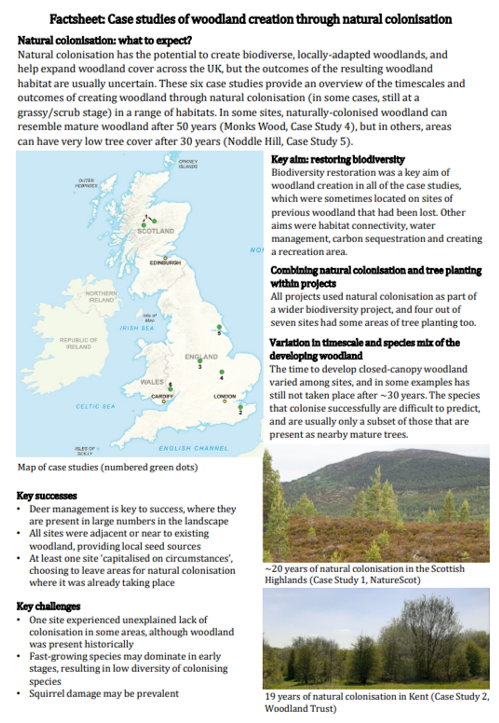We hope to produce a number of academic and non-academic outputs over the course of the project, including academic papers, articles in professional journals and information tailored to land managers.
|
This factsheet includes six examples of woodland creation through natural colonisation across the UK. We have collated these in response to discussions with TreE PlaNat's Knowledge User Board, who highlighted the need to share case studies early on in the project.
We are looking to expand the range of case studies included - please get in touch if you have a case study that you would like to include. DOI: http://dx.doi.org/10.7488/era/3766 |

